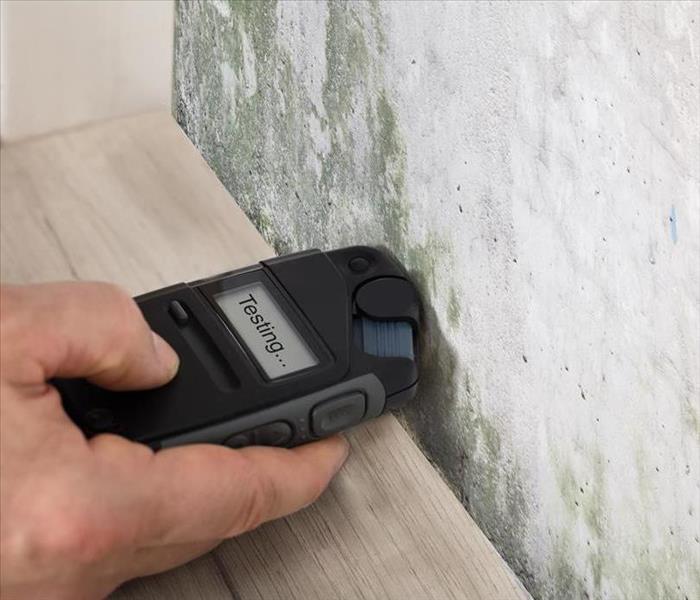How To Assess Mold Damage
3/21/2022 (Permalink)
Whether you just smell the distinctive musty odor of mold or see visible spots in your Bountiful, UT home, determining the extent of the damage isn’t always easily apparent. Mold and mildew may easily spread to other areas of the home, as well as be lurking behind walls, under flooring and in other areas that are hard to reach or see. To ensure the best air quality and to protect the home, it is recommended to get a mold assessment from a professional mold damage company.
Why Get an Inspection?
If you think you have a lurking fungi issue, do you know what kind it is? While some are fairly harmless, black mold is not a type you want to spread in your home. A professional inspection not only helps determine the mold species but also helps with the following:
- Pinpoints the location of the mold growth, as well as how big the problem may be.
- Determines the number of spores that are airborne and circulating in the home.
- After remediation, it provides peace of mind that the problem has been properly eradicated.
What Does an Environmental Hygienist Test?
A mold assessment should always be done by a certified specialist. This will ensure that they have the proper training and tools to help you solve your mold issue. As part of the inspection, they will conduct tests to find the moisture source, estimate the size of the impacted area and identify the type of molds found.
To assist in the process, environmental hygienists have an array of industrial tools to ensure the best results. This includes a laser particle counter to check air quality; moisture meters to locate areas with high moisture levels; hygrometers to test humidity, dew point and temperature; and infrared cameras to identify areas with high temperatures or elevated moisture levels. A professional will conduct the following tests:
Air:
This determines how concentrated the spores are. This is an especially important test when there are no visible signs of growth.
Surface:
Swabs, tape and other tools are used to take samples throughout the home. Since mold forms where it has the right conditions, it could be growing in different parts of the home. These tests help determine how many spores and how much mold may be growing.
Bulk:
Although not always necessary, this involves removing materials from the home to be tested in the lab to determine how concentrated mold particles are in the home.
Culture:
In the lab, the samples taken from the home are purposely nourished to create a colony. This enables the professional to verify which mold species is in your home.
Once the assessment is completed, a specialist will provide an overall plan of action for remediation and restoration. During and after all the work is done, inspections are completed to ensure the cleanup is taking care of the problem and that the home is free of mold.
The home should be a safe, welcoming environment. When water damage is sustained, it means that mold may be hiding. A mold assessment helps determine how big of a problem you have and makes it easier to get a plan of action in place to remediate it.






 24/7 Emergency Service
24/7 Emergency Service